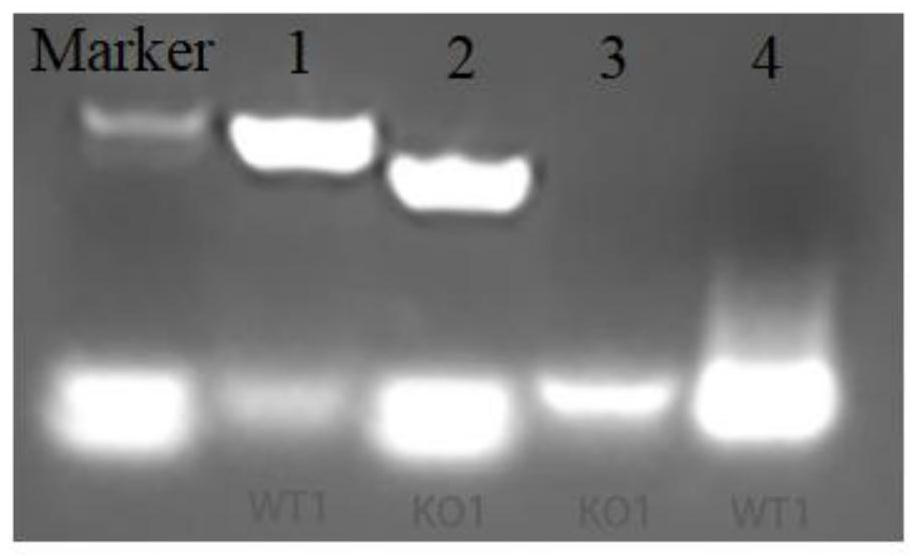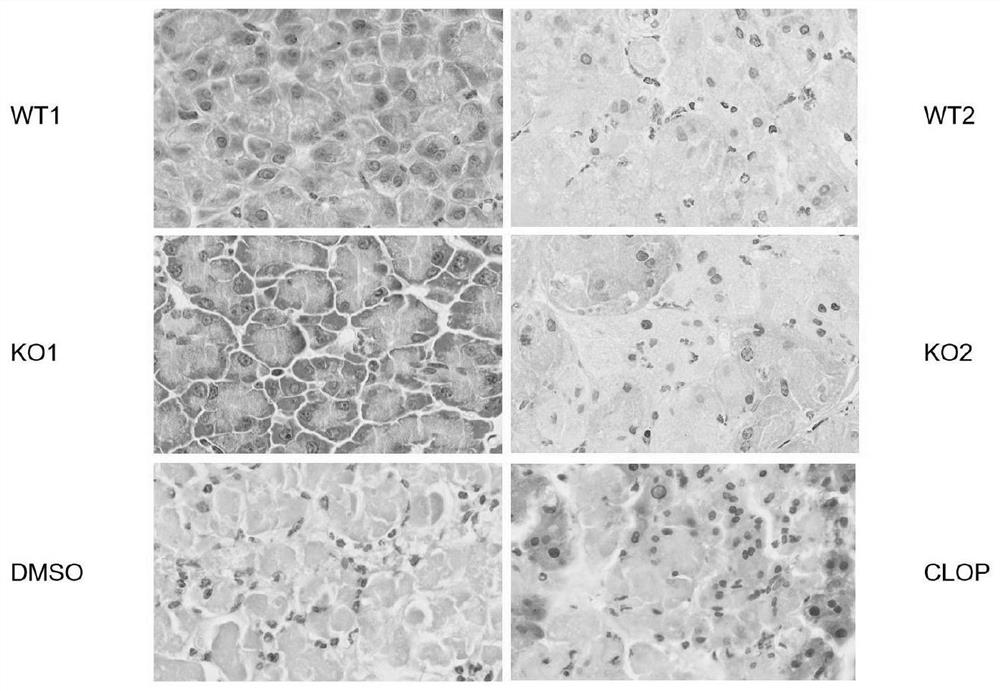Application of P2Y12 receptor and antagonist thereof in diagnosis and treatment of acute pancreatitis
A technology for acute pancreatitis and P2Y12, applied in the field of biomedicine, can solve problems such as deficiency, and achieve good application prospects
- Summary
- Abstract
- Description
- Claims
- Application Information
AI Technical Summary
Problems solved by technology
Method used
Image
Examples
Embodiment 1
[0022] (1) Experimental animals
[0023] 20g-25g male wild-type C57BL / 6 mice and P2Y12 gene knockout mice (gene knockout mice were donated by Professor Liu Junling, School of Medicine, Shanghai Jiaotong University; wild-type mice were purchased from Beijing Weitong Lihua Company).
[0024] (2) Experimental process
[0025] The mice were randomly divided into 4 groups, namely wild-type control group (WT1), wild-type model group (WT2), gene knockout control group (KO1) and gene knockout model group (KO2), with 10 mice in each group. Each group of the model group adopts the "retrograde injection of sodium taurocholate into the pancreaticobiliary duct" method, and injects 5% sodium taurocholate (dose: 10 μL / mouse) into the retrograde pancreaticobiliary duct through the intestinal wall to establish severe acute pancreatitis in mice. (SAP) model. The control group was injected with the same amount of 0.9% normal saline by the same method.
PUM
 Login to View More
Login to View More Abstract
Description
Claims
Application Information
 Login to View More
Login to View More - R&D
- Intellectual Property
- Life Sciences
- Materials
- Tech Scout
- Unparalleled Data Quality
- Higher Quality Content
- 60% Fewer Hallucinations
Browse by: Latest US Patents, China's latest patents, Technical Efficacy Thesaurus, Application Domain, Technology Topic, Popular Technical Reports.
© 2025 PatSnap. All rights reserved.Legal|Privacy policy|Modern Slavery Act Transparency Statement|Sitemap|About US| Contact US: help@patsnap.com



